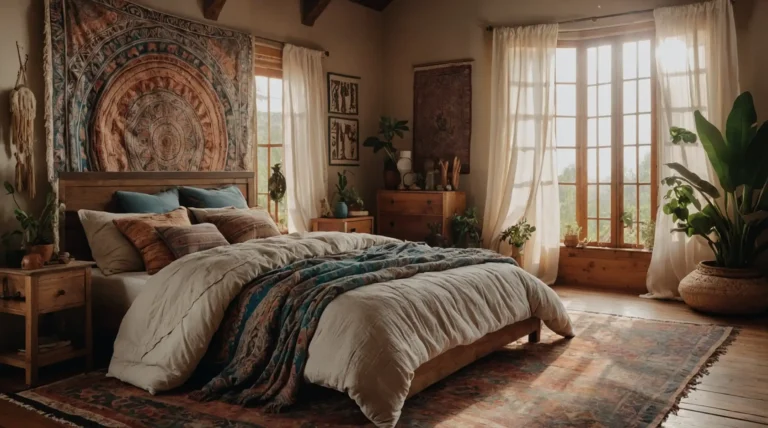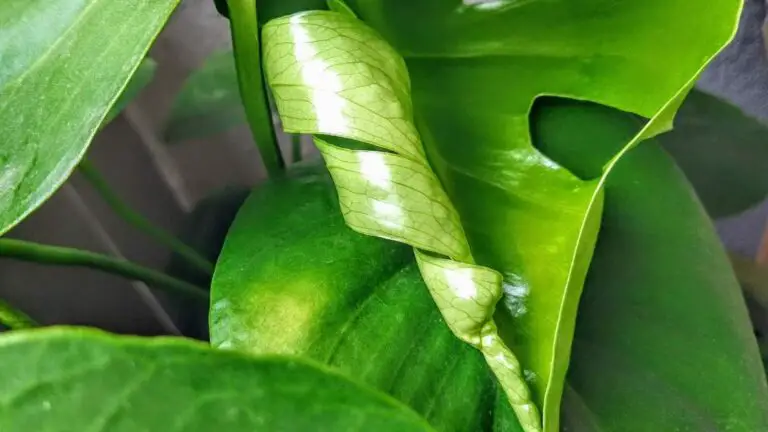9 Fresh Vegetable Garden Ideas: Transform Your Outdoor Space
When it comes to growing my own food, tending to a vegetable garden is immensely satisfying.
Whether it’s the taste of freshly picked tomatoes or the simple joy of seeing my plants thrive, gardening offers countless rewards.

If you’re like me, you’re always looking for new and creative ways to improve your garden. What fresh, inspiring ideas can help breathe new life into a vegetable garden?
This article will explore various concepts to enhance your gardening experience and make the most out of your space.
1: Raised Bed Gardens
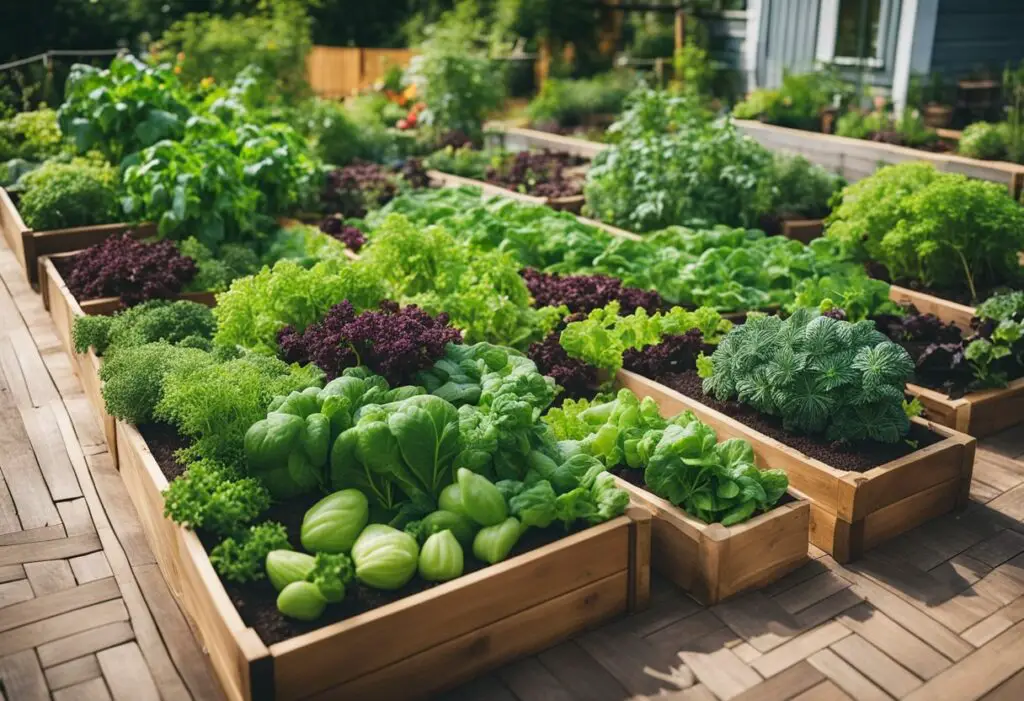
I find raised bed gardens to be a fantastic way to grow vegetables. They provide better soil drainage and reduce the risk of soil compaction, and plants in raised beds usually have fewer weeds and pests to deal with.
One of my favorite designs includes simple frames made from cedar boards. Cedar resists rotting and looks great in any yard. For visual interest, I sometimes add colorful flowers along with veggies.
Raised beds also make gardening more accessible. The height of the beds can be adjusted to reduce bending and kneeling, which is perfect for those with back problems.
Additionally, the elevated soil warms up faster in the spring, giving me an early start on planting.
Using trellises in raised beds works well for plants like tomatoes and cucumbers.
Stretching garden netting across the structure helps my crops grow upwards, saving space and making harvesting easier. This method truly maximizes the garden’s potential.
2: Vertical Vegetable Planter

A vertical vegetable planter is an excellent way to grow more in less space. I use wall-mounted containers, which are perfect for small plants and herbs.
If you have a sunny fence, this is a great option.
Leafy greens like lettuce and spinach thrive in hanging baskets or stacked planters. Their shallow roots make them ideal for vertical gardening.
The setup allows me to access and harvest them easily.
For a more extensive setup, you can try heavy-duty trellises. Vegetables like loofah vines and peppers grow well vertically and add a touch of green to any space.
Loofah vines can grow up to 23 feet tall and need about 5-6 hours of direct sunlight daily.
3: Organic Compost Mulching
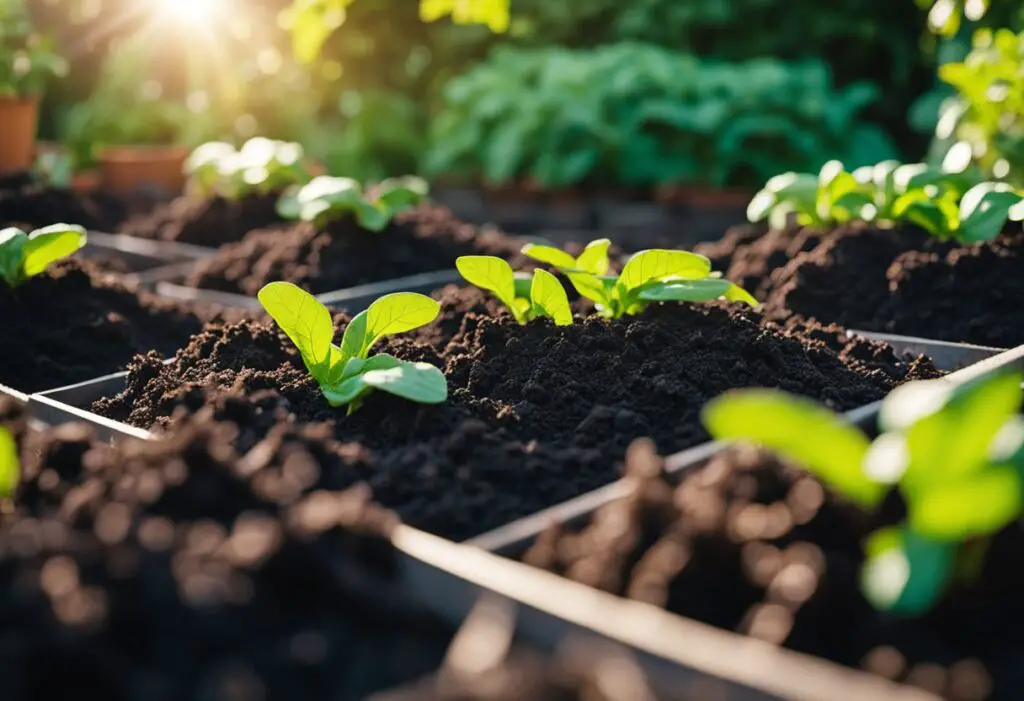
When it comes to mulching, I always recommend using organic compost. It’s one of the best mulches for vegetable gardens, improving soil tilth and keeping weeds down.
Spreading 1-4 inches of compost around plants helps retain moisture. It also adds nutrients like nitrogen, phosphorus, and potassium, promoting healthier growth.
Compost is versatile. You can make your own or buy it from a garden center. Even a 5-gallon bucket of compost can make a big difference for small gardens.
4: Companion Planting Techniques
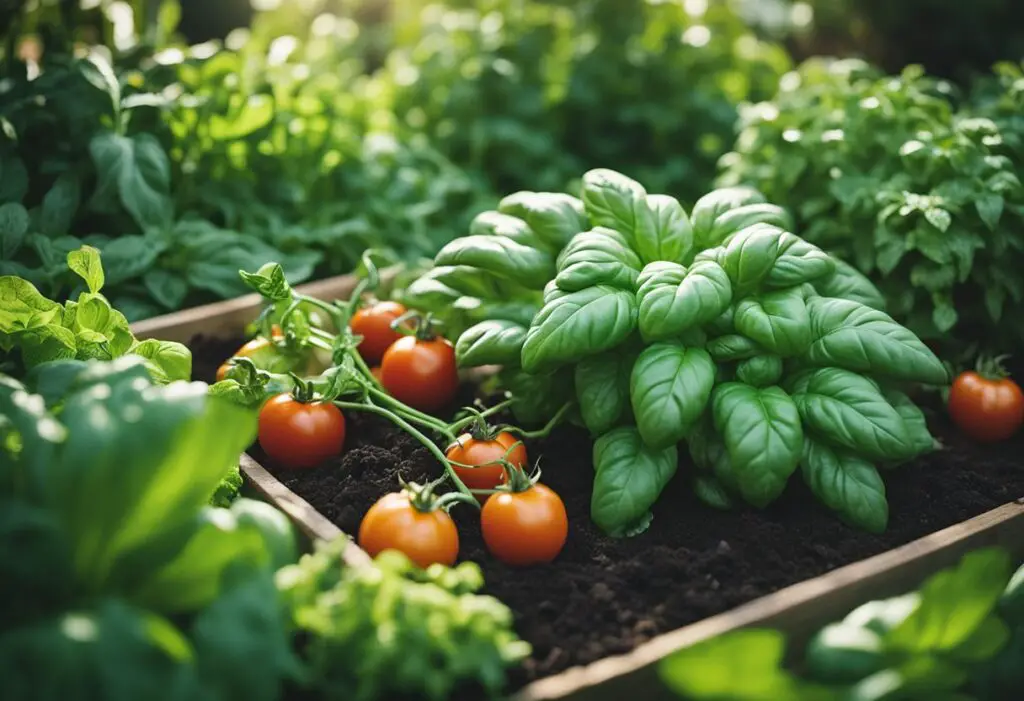
I’ve found that companion planting is a great way to improve my garden’s health. Some plants support each other by boosting growth or repelling pests.
For example, tomatoes and basil grow well together because basil can repel insects that might harm tomatoes.
Tall plants like corn can provide shade for crops that prefer cooler temperatures, like lettuce. This can be especially helpful in the hot summer months when lettuce might otherwise wilt.
Certain flowers, such as chamomile, can attract beneficial insects. These insects, like hoverflies and predatory wasps, help control garden pests naturally.
I also avoid planting certain vegetables next to each other. For instance, broccoli should not be near tomatoes, eggplant, or peppers because they can compete for nutrients and attract similar pests.
5: Square Foot Gardening

Square foot gardening is a technique that uses small, manageable plots. Each plot is divided into 1-foot squares, making organizing and planting different veggies easy.
I love this method because it maximizes space. You can grow various vegetables in one compact area. For instance, you can plant Swiss chard and tomatoes side by side.
Square foot gardens are ideal for beginners. The predefined squares simplify planning. Plus, raised beds reduce the need for bending and keep weeds at bay.
6: Herb Spirals

One great way to mix style with function is to build an herb spiral. These spirals allow a variety of herbs to thrive in a compact space.
I start by gathering materials like bricks, stones, or logs to build one. The design starts at a central point and spirals outward and upward.
I use larger stones at the base and smaller ones as I move up. The height usually reaches about 0.80 to 1 meter. The slight incline helps with water drainage.
For planting, rosemary, oregano, and thyme do well at the top. The bottom is perfect for herbs like parsley and chives that prefer more moisture.
Following these steps creates a productive and beautiful herb garden.
7: DIY Trellises
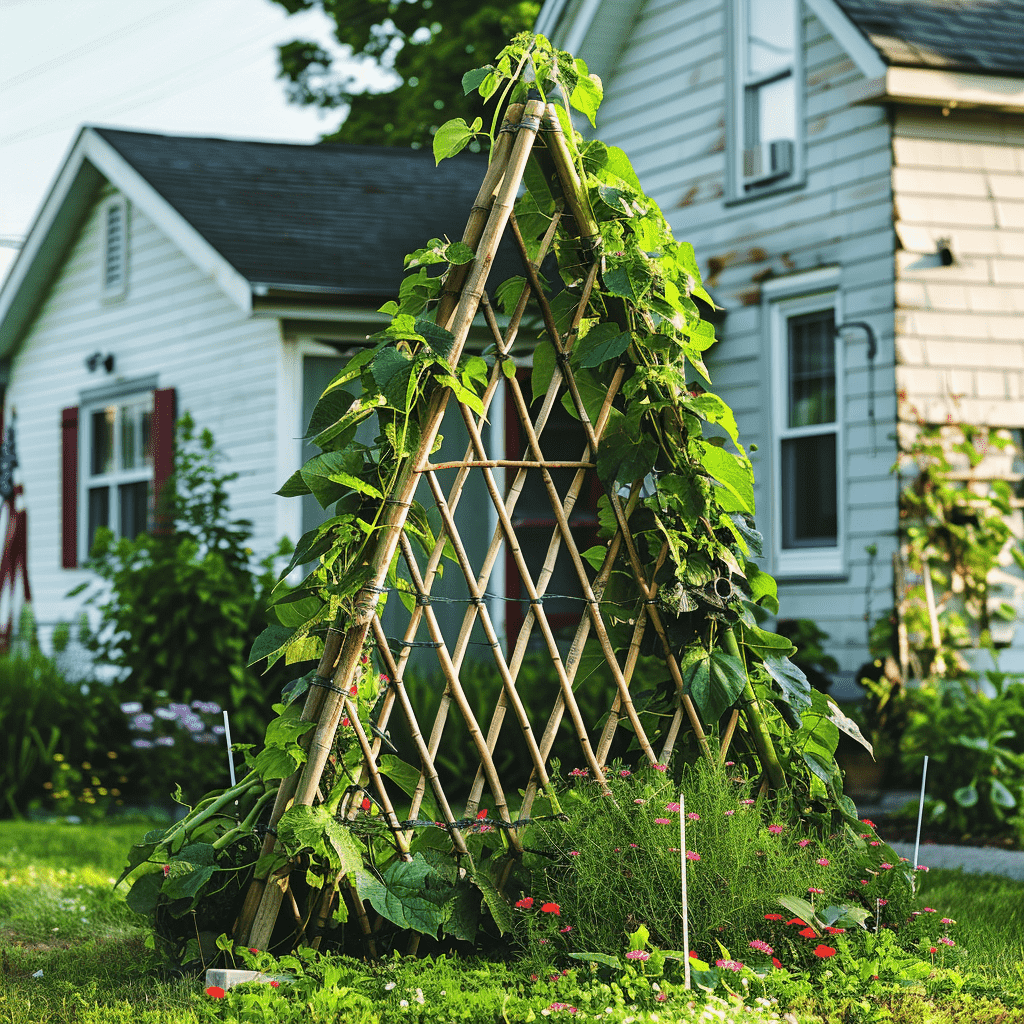
Adding a trellis to your garden is a great way to support climbing plants and maximize space. One simple idea is a triangular bean trellis.
Using wood garden stakes and furring strip board lumber, I can create a sturdy structure for beans, peas, or cucumbers.
Another option is a lattice trellis. It’s versatile and can be used for flowers, fruits, or veggies. The crisscross pattern adds a classic look to the garden.
For a quick and budget-friendly project, I can try a wire trellis. By using some basic wire fencing, I can set up a trellis in no time.
This method is especially good for lightweight plants like tomatoes.
I can also use bamboo to make a teepee-shaped trellis. Bamboo stakes and garden twine combine to form a strong yet flexible support for plants.
8: Drip Irrigation Systems
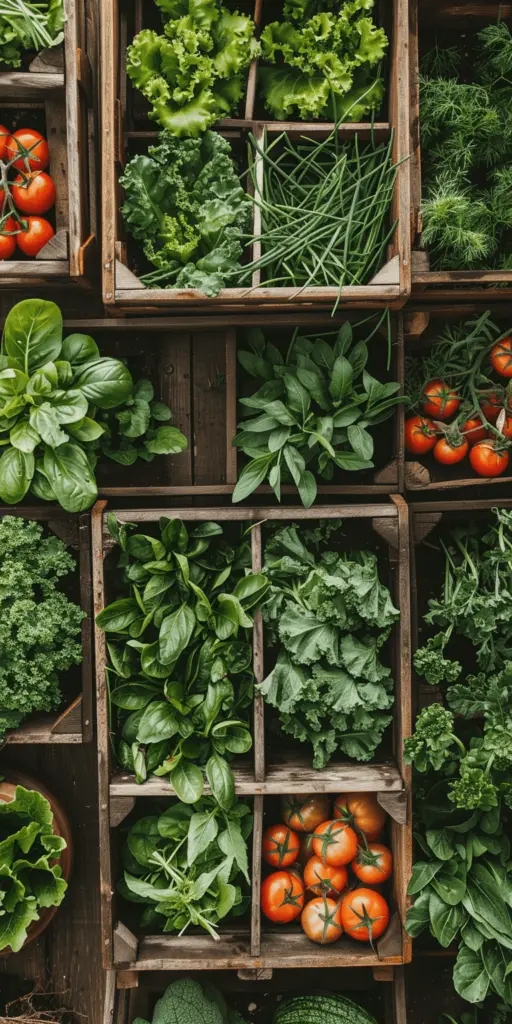
I find drip irrigation systems to be incredibly efficient for my vegetable garden. These systems deliver water directly to the roots of plants, reducing waste and promoting healthy growth.
Unlike traditional methods, drip irrigation uses less water and ensures that each plant gets the right amount.
One simple way to set up a drip irrigation system is by connecting headers to your water source using a garden hose.
This method is easy to manage and perfect for DIY enthusiasts. I often use this guide for step-by-step instructions on installing a drip irrigation system.
Another creative option I have tried is the milk jug watering system. By drilling holes in a milk jug and placing it near the plants, water slowly drips out, keeping the soil moist.
This method is cheap and effective. Check out more budget-friendly options for this DIY drip watering system.
9: Pallet Garden Projects
Pallet garden projects are a great way to upcycle old wooden pallets into useful and beautiful garden features.
They can be cheap, creative, and functional.
One popular idea is the vertical herb garden. I can grow my favorite herbs in a compact space by securing small pots or fabric pockets for the slats.
Another easy project is the square pallet garden. By stacking multiple pallet levels and filling them with dirt, I can create a lot of growing space for various plants.
This setup allows planting from all sides.
For a decorative touch, I might try succulent wall art. By attaching small succulents to the frame of a wooden pallet, I can create a unique design.
It adds a lovely green element to any space.
Design Principles for Fresh Vegetable Gardens
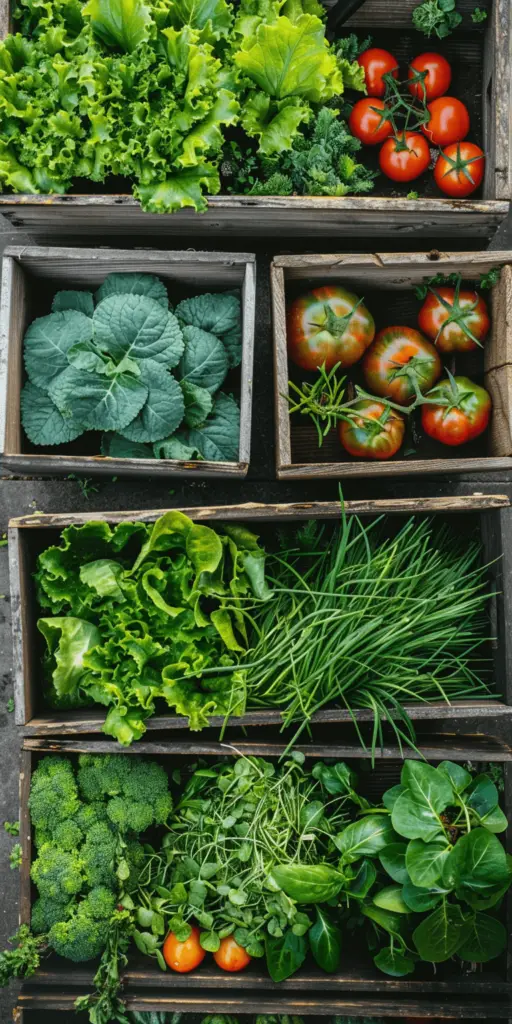
Planning a vegetable garden requires practical layout decisions and visual features that both function well and look appealing.
The sections below elaborate on these principles.
Creating Functional Layouts
I start by mapping out how much space each plant needs to make an efficient garden. Square-foot gardening is a popular method that uses a grid to maximize space.
Each plant type gets its own square, which makes it easy to manage and ensures every plant has the right environment to thrive.
I also consider the sunlight requirements. Most vegetables need at least 6-8 hours of sunlight daily, so I position sun-loving plants accordingly.
Raised beds help improve drainage and can extend the growing season by warming up faster than ground soil.
They are also easier to maintain and can be built to any size I need. For paths between beds, I make sure they are wide enough for a wheelbarrow, usually about 2-3 feet wide.
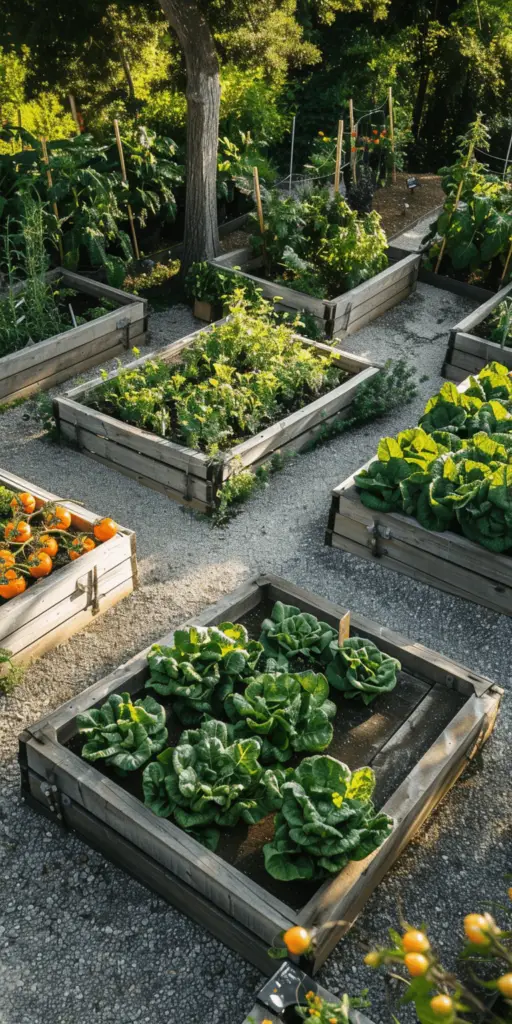
Incorporating Aesthetic Elements
Adding artistic touches to a garden makes it more enjoyable and can benefit the plants. I like integrating decorative elements such as benches, birdbaths, and small fountains.
These features create a peaceful environment to relax and enjoy the garden’s beauty.
To maintain visual interest, I use plant supports like trellises or obelisks. These structures help tall plants like tomatoes and cucumbers grow properly while adding vertical elements to the garden.
I also pay attention to plant color and texture. Grouping plants with different foliage and blooms can make the garden visually appealing.
Whether it’s a combination of bright flowers or varied green shades, the right mix can make a garden unique and pleasing to look at.
Try checking out gardens with raised bed gardening plans or explore vegetable garden design inspirations for even more design ideas.

Soil and Fertilization Techniques
Choosing the right soil and fertilization methods is crucial for a successful vegetable garden.
Both soil type and the use of organic fertilizers can significantly impact plant growth and yield.
Understanding Soil Types
Soil consists mainly of sand, silt, and clay. The best vegetable soil is loamy soil, which has a balanced mix of these components.
Loamy soil is well-draining yet retains enough moisture and nutrients.
To determine your soil type, you can do a simple test by moistening a handful of soil and rolling it into a ball.
Sandy soil falls apart easily, while clay soil forms a sticky ball. Loamy soil holds its shape but crumbles easily.
Improving soil involves adding organic matter like compost or well-rotted manure. This improves soil structure and increases nutrient content.
Soil pH is another critical factor. Most vegetables prefer a pH between 6.0 and 7.0. You can test soil pH using a home testing kit and adjust it with lime to raise pH or sulfur to lower it.
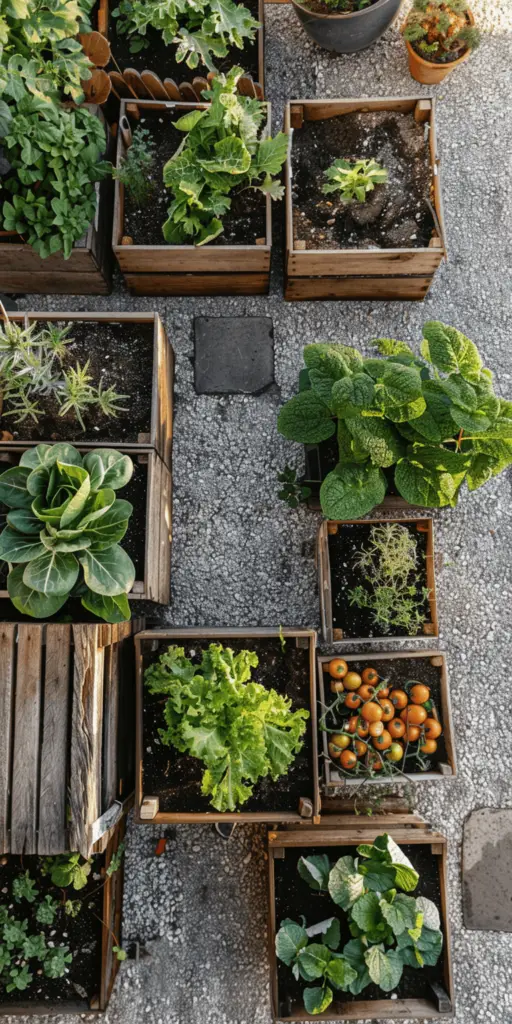
Using Organic Fertilizers
Organic fertilizers are derived from natural sources like plants, animals, or minerals. They release nutrients slowly and improve soil health over time.
Some common organic fertilizers include compost, manure, bone meal, and fish emulsion.
Compost is rich in nutrients and improves soil structure. It can be made from kitchen scraps, garden waste, and even cardboard.
Manure adds nitrogen, phosphorous, and potassium. However, it should be well-rotted to avoid burning plant roots.
Bone meal is high in phosphorous, which aids in root development. Fish emulsion, on the other hand, provides a quick nitrogen boost.
When using organic fertilizers, it is essential to follow application rates to avoid over-fertilizing. Applying too much can harm plants and pollute water sources.
You can create a thriving vegetable garden by understanding your soil and using the right organic fertilizers.
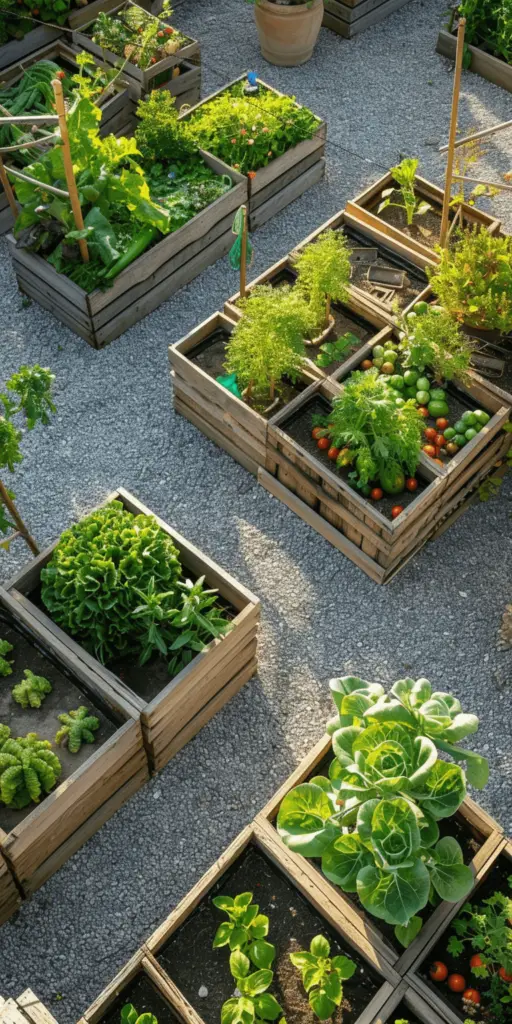
Watering Strategies for Optimal Growth
Proper watering is essential for a healthy vegetable garden.
The right techniques can improve plant growth and ensure a bountiful harvest.
Implementing Drip Irrigation
I recommend using drip irrigation because it is efficient. This method delivers water directly to the roots, minimizing waste. It reduces evaporation and ensures plants get the moisture they need.
I water my garden early in the morning to prevent fungal growth and optimize water use.
A basic drip irrigation system includes a main line, drip lines, and emitters. I position the emitters close to each plant. Gravity or a timer can control the water flow.
I check for clogs and adjust the system as plants grow for the best results. This method significantly enhances the effectiveness of my vegetable garden.


